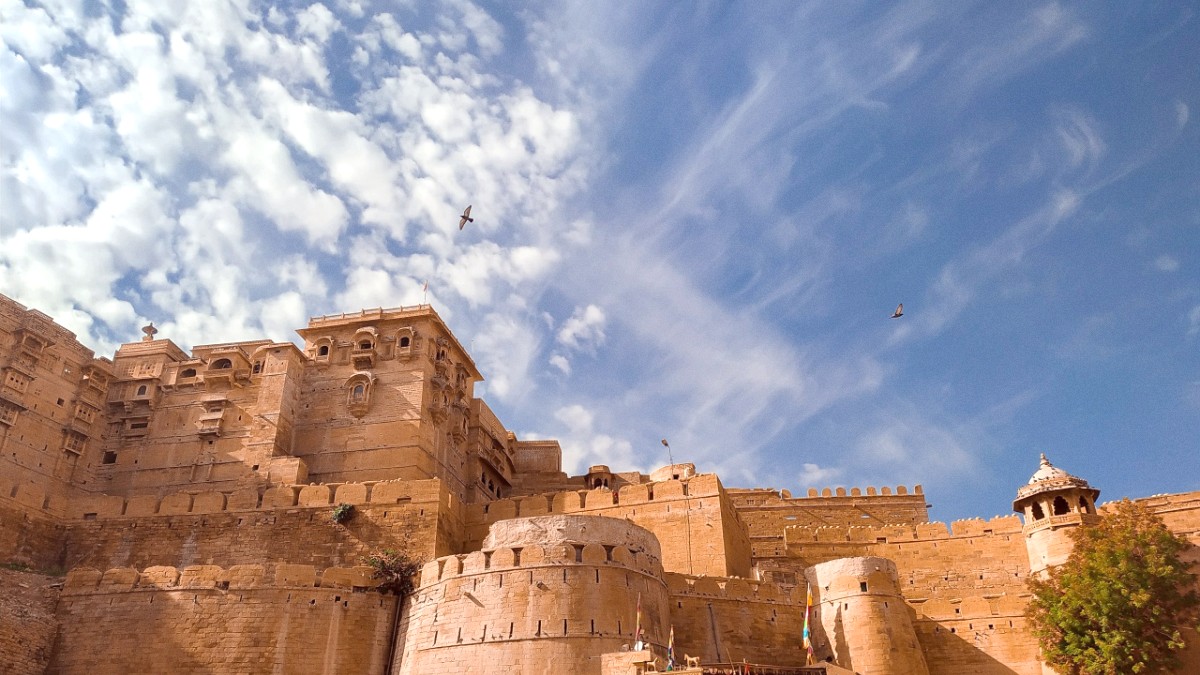
Rajasthan, India
The Jaisalmer Fort (Sonar Quila), an UNESCO World Heritage Site, is one of the few "living forts" globally. A quarter of the city's population still lives within its walls. Rawal Jaisal built it in 1156 AD. The massive sandstone structure turns golden at sunset, hence its name.
It houses palaces, temples, havelis, shops, and guesthouses, forming a complete historical ecosystem. The fort operates 24/7 as a living city. There is no general entry fee for the fort itself, but specific attractions within have fees.
This lake is a relaxing escape from the city bustle.
(Day Trip) About 11 miles (18 km) from Jaisalmer. An eerie village abandoned overnight. It remains largely untouched, offering a fascinating historical site.
The entire fort is a living historical district. Its architectural style, with yellow sandstone and intricate carvings, defines the city.
This area features traditional houses, smaller temples, and bustling markets. It reflects Jaisalmer's historical urban fabric.
(Day Trip) Near the India-Pakistan border, about 75 miles (120 km) from Jaisalmer. Famous for its association with past wars. The BSF manages it.
Exquisitely carved temples, important for Jain pilgrims and art enthusiasts.
The desert environment contributes unique natural beauty and wildlife.
A vast protected area (over 1,158 sq miles / 3,000 sq km). It showcases the fragile Thar Desert ecosystem.
Home to desert fox, chinkara (Indian gazelle), desert cat, and various bird species. Jeep safaris with a guide are popular for spotting wildlife.
The park also holds the critically endangered Great Indian Bustard, though sightings are rare.
The most popular desert landscape near Jaisalmer. It features vast shifting sand dunes, ideal for camel safaris and stunning sunset views. About 28 miles (45 km) west of Jaisalmer.
A quieter alternative to Sam, offering a more serene desert experience. It lies about 31 miles (50 km) southwest of Jaisalmer. It appeals to those seeking less commercialization.
The yellowish sandstone gives Jaisalmer its "Golden City" name. The entire fort and many city buildings use this local stone.
Desert National Park showcases the unique desert ecosystem. Jaisalmer has no traditional parks or gardens within the city that are major attractions.
Gadisar Lake is an artificial lake, mainly for leisure activities like boating and photography. Jaisalmer does not have natural beaches, lakes, or significant waterways.
Sam Sand Dunes and Khuri Sand Dunes are prime locations for stunning desert landscapes and sunset views. They are ideal for photography and experiencing the vast desert.
For attractions and tours, platforms like GetYourGuide are useful. They help in booking tickets and experiences in advance.
Venture beyond the main tourist circuit for unique discoveries. These spots offer a different side of Jaisalmer.
Exploring the narrower, less commercialized lanes within the Jaisalmer Fort can reveal hidden courtyards, local life, and small, traditional workshops that tourists often overlook. Ask locals for their favorite spots.
These locations are less frequented but hold significant charm and historical value.
Discover new areas and capture stunning memories.
A living monument, the fort offers endless exploration.
Beyond the main attractions, Jaisalmer has more to uncover.
Explore less commercialized lanes within the fort for hidden courtyards and traditional workshops rarely seen by tourists.
Capture intricate haveli carvings, the fort in golden light, desert sunsets, and daily life scenes in markets for unique shots.
Staying inside the Jaisalmer Fort itself, in one of its guesthouses, gives the most immersive historical experience; you sleep within ancient walls.
Formal art galleries are limited. Many shops within the fort and city sell local paintings, textiles, and handicrafts.
Cultural performances with traditional Rajasthani folk music and dance forms like Kalbelia occur at desert camps and some hotels.
This museum focuses on the history, art, and culture of the Thar Desert region, including folk instruments and costumes.
The Government Museum Jaisalmer displays archaeological finds and ancient sculptures from the region.
The Jaisalmer Fort Palace Museum has royal artifacts, weaponry, and textiles.
Explore the unique ecosystem of the Thar Desert.
Jaisalmer has sacred sites holding historical and spiritual value.
Wear comfortable shoes, especially for exploring the fort's narrow lanes.
Carry water and stay hydrated, especially during the day. Sun protection (hat, sunglasses, sunscreen) is advisable.
Effective planning helps travelers make the most of Jaisalmer's attractions.
Many tour operators offer bundled packages.
Respect local customs while capturing memories.
Check specific timings as they can vary by season and public holidays.
Plan to spend a few hours at each museum to see all exhibits.
Consider various modes of transport to get around Jaisalmer's attractions.
Negotiate auto-rickshaw fares before starting your journey.
Information for travelers with specific accessibility needs.
Some modern hotels outside the fort have better accessibility facilities.
Focus on Jaisalmer Fort (Palace, Jain Temples) and Patwon ki Haveli. Evening at Gadisar Lake for sunset.
Day 1: Fort & Havelis. Day 2: Desert Safari to Sam Sand Dunes (camel ride, cultural show, dinner).
Day 1 & 2 as above. Day 3: Kuldhara Village, Bada Bagh, and explore local markets.